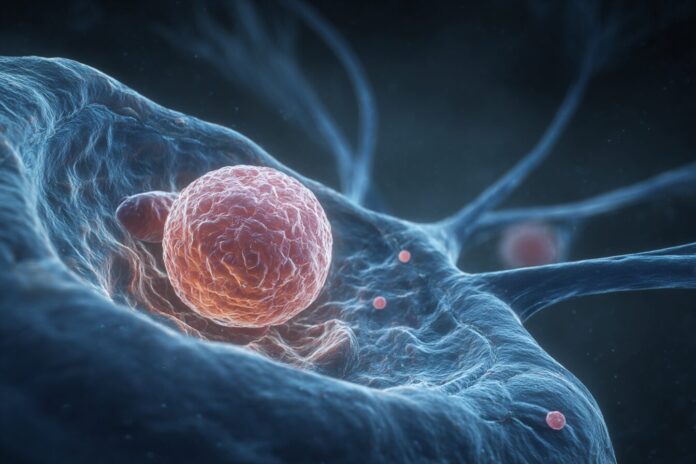For the first time in medical history, scientists have captured astonishing 3D images of a human embryo implanting in real time. This breakthrough not only deepens our understanding of early pregnancy but also marks a revolutionary step forward in assisted reproduction. Because technological advances now allow us to scrutinize the dynamic process as never before, these findings open new avenues for research and therapeutic breakthroughs.Most importantly, this groundbreaking achievement sheds light on the very beginning of life. In doing so, it bridges the gap between static images and the living, intricate ballet of embryo implantation. With the application of cutting-edge imaging technology, researchers have redefined our comprehension of early development and infertility treatment.
Why Implantation Matters in Human Fertility
Implantation is the cornerstone of human fertility and the gateway to pregnancy. When an embryo embeds itself successfully into the uterine lining, it signals the commencement of a complex interplay between maternal and embryonic tissues. Therefore, understanding the biomechanical and biochemical components of this process is crucial. Research has shown that failures during this initial implantation phase contribute significantly to infertility, as up to 60% of spontaneous miscarriages occur due to implantation issues.Besides that, gaining insights into implantation paves the way for innovations in fertility treatments. For example, by analyzing the factors that ensure a successful implantation, medical professionals can refine in vitro fertilization (IVF) techniques to boost success rates. As noted in studies featured on NDTV and Phys.org, each finding ignites hope for millions struggling with infertility.
Pioneering Real-Time 3D Observation
Until this pioneering study, scientists had only managed to capture static snapshots of the embryo at various stages of implantation. Most importantly, the introduction of live 3D imaging has transformed our approach to reproductive medicine. Using an advanced, artificial collagen-rich uterine matrix, the Institute for Bioengineering of Catalonia (IBEC) successfully simulated the human uterine environment, enabling the first real-time observations.Because of these innovative laboratory techniques, researchers were able to visualize the complete, dynamic sequence of embryo attachment and invasion. This breakthrough marks a significant departure from traditional methods, which relied on sequential still images. More details of this remarkable development have been highlighted by IBEC Barcelona and further confirmed by reports on EurekAlert.
The Mechanics of Embryo Implantation: Force and Invasion
Detailed 3D videos reveal that the process of implantation is not a gentle affair. Instead, the embryo burrows invasively into the uterine lining while exerting considerable mechanical force. At the same time, it secretes enzymes that remodel and break down collagen fibers, ensuring its secure integration. This dynamic interplay is critical for the embryo to embed itself into the uterine wall effectively.
Because the embryo must physically negotiate the dense collagen matrix, it experiences mechanical challenges that are pivotal for successful implantation. These forces, as captured by the real-time imaging, provide unparalleled insights into the delicate balance of biological invasion and tissue remodeling. Such revelations help clarify why some embryos fail and others succeed, a topic discussed in depth on YouTube.
How Was This Breakthrough Achieved?
The success of this research is attributed to the development of a sophisticated laboratory system that replicates the exterior of the human uterus. Researchers combined ethically sourced human embryos with a synthetic, collagen-rich matrix to mimic the uterine tissue. This setup enabled continuous observation using advanced real-time fluorescence imaging technology.Most importantly, the system captured the subtle movements of collagen fibers, which flocked toward the center of the implanting embryo. Accordingly, such intricate measurements have opened up discussions regarding the biomechanical forces at play during implantation, further detailed in reports from NDTV and supported by findings available on Phys.org.
Implications for Fertility and IVF Success
The real-time insights into embryo implantation have profound implications for fertility treatments and IVF protocols. Because clinicians now have a clearer picture of the necessary conditions for successful implantation, individualized treatment plans can be designed. Such personalized approaches will enhance the effectiveness of IVF, reducing the risk of implantation failures.Furthermore, the data derived from this study guide future research aimed at optimizing the endometrial environment. Therefore, patients undergoing fertility treatments might soon benefit from improved implantation rates and overall pregnancy outcomes. This promising direction is supported by evidence and analysis from reputable sources like EurekAlert.
Future Perspectives and Ongoing Research
Looking forward, these breakthroughs offer a glimpse into the future of reproductive medicine. Because roughly one-third of embryos fail to implant or are lost shortly after implantation, understanding this phase is crucial. Enhanced imaging techniques not only reveal the biological minutiae of implantation but also offer a roadmap for overcoming limits in current IVF practices.Most importantly, continued research will likely focus on refining these imaging methods and integrating genetic and biochemical data. Such efforts aim to ensure that every embryo has the best opportunity for successful integration. Insights provided by real-time 3D imaging are already setting the stage for new treatment strategies, as discussed in research updates on IBEC Barcelona and other scientific platforms.
Conclusion
The capture of the first-ever 3D images of human embryo implantation is more than a scientific marvel; it is a beacon of hope for millions impacted by infertility. These images encapsulate the fierce and intricate dance between an embryo and the uterine lining, providing tangible evidence of nature’s complexity.Because of this unprecedented insight, clinicians and researchers are now better equipped to design targeted therapies that could significantly improve IVF success rates. Ultimately, as the fusion of bioengineering and reproductive medicine evolves, the earliest stages of human life will become more transparent and manageable, promising brighter reproductive futures for many.
References
[1] Phys.org: Human embryo implantation recorded in real time
[2] EurekAlert: Real-time embryo implantation breakthroughs
[3] IBEC Barcelona: First recording of human embryo implantation
[4] NDTV: New Study Could Boost IVF Success
[5] YouTube: 3D visualization of embryo implantation



